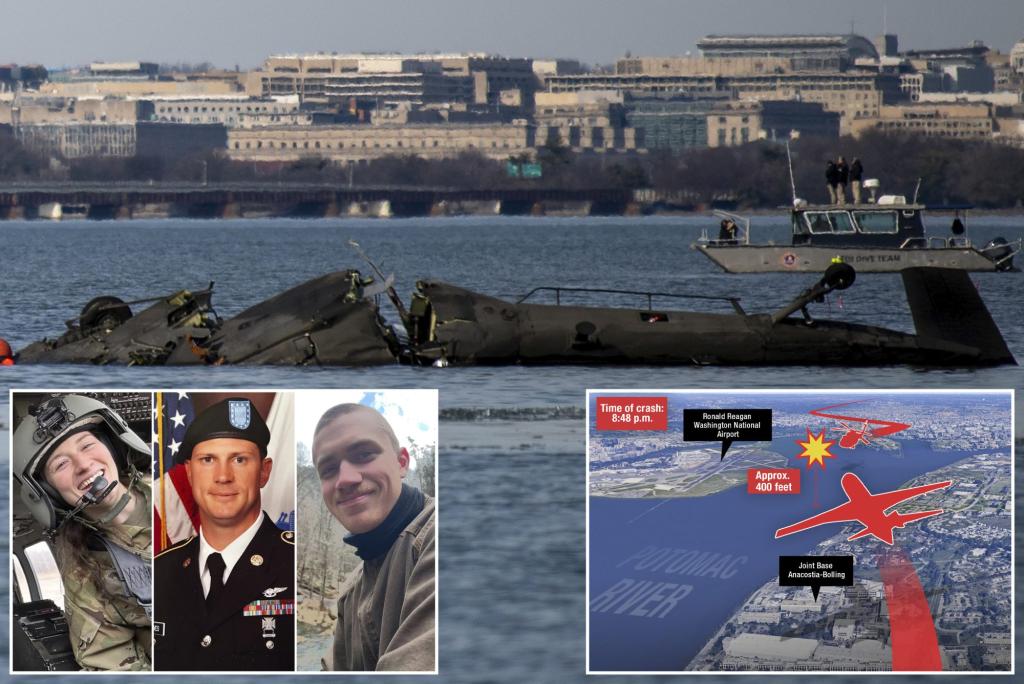The tragic collision between an Army Black Hawk helicopter and an American Airlines jet near Reagan National Airport in Washington, D.C., last week has prompted an intensive investigation by the National Transportation Safety Board (NTSB). Preliminary findings indicate that the military helicopter was flying above the designated altitude limit for the area at the time of the crash, raising significant concerns about the factors contributing to the devastating incident. Radar data obtained from air traffic control suggests that the Black Hawk was operating at an altitude of approximately 300 feet, as displayed on the air traffic control screen. However, the prescribed maximum altitude for helicopters in this airspace, which intersects with the flight path of jets arriving and departing from Reagan National Airport, is 200 feet. This discrepancy in altitude has become a central focus of the ongoing investigation.
The NTSB has acknowledged that the radar data provides altitude readings rounded to the nearest 100 feet. This implies that the actual altitude of the helicopter could have ranged between 251 and 349 feet. While this margin of error requires further investigation, the fact remains that even the lowest possible altitude within this range exceeds the stipulated limit. Determining the precise altitude of the Black Hawk is crucial for reconstructing the sequence of events leading to the collision and understanding why the helicopter was operating above the designated altitude. Until the helicopter is recovered from the Potomac River and thoroughly examined, the NTSB cannot definitively confirm the exact altitude or other critical details surrounding the incident.
The recovery operation, coordinated with the Naval Sea Systems Command Supervisor of Salvage and Diving, has made significant progress in retrieving substantial portions of the wreckage. Key components, including the ring wing, center fuselage, part of the left wing and left fuselage, and substantial sections of the forward cabin and cockpit, have been successfully salvaged from the frigid waters of the Potomac River. These recovered parts will be transported to a secure location for detailed examination and analysis, forming a critical part of the NTSB’s investigation into the cause of the crash. The Black Hawk helicopter itself is expected to be removed from the river later this week, marking a crucial step in the investigation process.
The collision, which resulted in the loss of 67 lives, represents the deadliest commercial aviation accident in the United States in over two decades. The scale of this tragedy underscores the critical importance of a thorough and meticulous investigation to identify the underlying causes and prevent similar incidents in the future. The NTSB’s investigation will encompass a comprehensive examination of various factors, including the flight paths of both aircraft, communication between the pilots and air traffic control, weather conditions at the time of the crash, and the maintenance records of both the helicopter and the jet. The investigation will also delve into the operational procedures and training protocols for both military and civilian aircraft operating in the vicinity of Reagan National Airport.
As the investigation progresses, the NTSB will analyze the flight data recorders and cockpit voice recorders, if recovered, to gain a deeper understanding of the events leading up to the collision. The information gleaned from these devices will provide crucial insights into the actions and decisions of the pilots, the performance of the aircraft systems, and any communication exchanges that occurred between the flight crews and air traffic control. The NTSB will also review air traffic control recordings, radar data, and eyewitness accounts to reconstruct the flight paths and determine the precise sequence of events leading to the impact. This process of gathering and analyzing data from multiple sources will be essential in determining the proximate cause of the accident and identifying any contributing factors.
The findings of the NTSB’s investigation will be instrumental in informing future safety recommendations and regulations aimed at preventing similar tragedies from occurring. The investigation will likely explore potential improvements to air traffic control procedures, communication protocols, and pilot training programs. The NTSB may also recommend changes to airspace design and altitude restrictions in the vicinity of airports to enhance safety and mitigate the risk of collisions. The ultimate goal of the investigation is to learn from this devastating incident and implement effective measures to improve aviation safety and prevent future loss of life.


